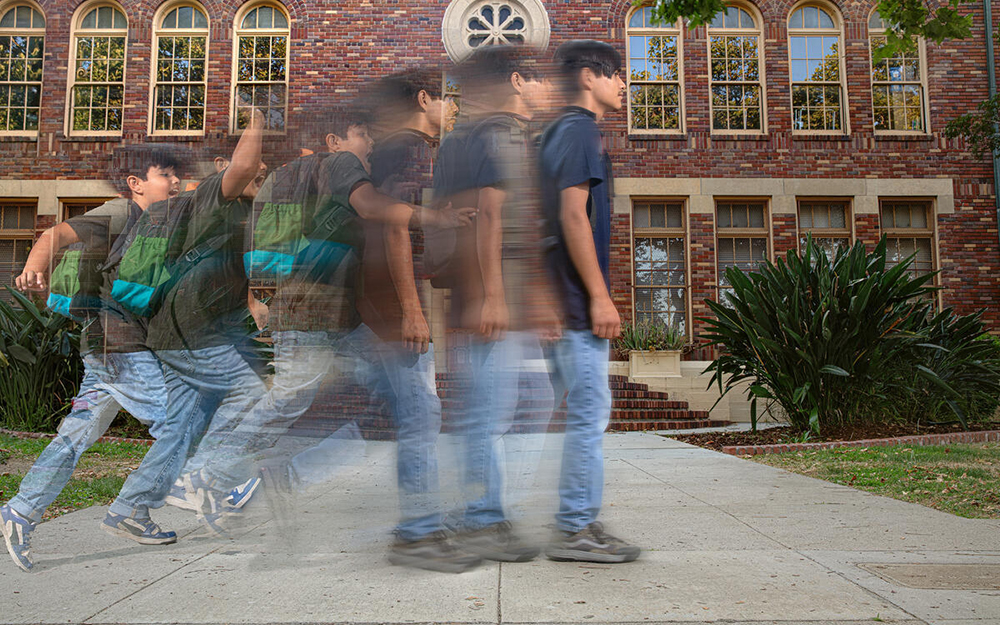Changing the Game With Internal Brace Augmentation
Date
January 24, 2022

Date
January 24, 2022
Credits
Medical providers featured in this article
In Brief
{{cta-block}}
A tear in the thumb’s ulnar collateral ligament (UCL) is a common yet devastating injury for professional and recreational athletes alike. The injury—often called skier’s thumb— can impact a person’s strength and range of motion in the hand, including the ability to grip and pinch.
"The internal brace helps prevent stress on the thumb right at the point where the ligament could tear again. This added layer of protection means patients can move their thumb again within about a week—sometimes in as little as two or three days."

"We see this injury most often in athletes, but it can happen to anyone," says Steven Shin, MD, Executive Vice Chair of the Department of Orthopaedics at Cedars-Sinai. "It’s a traumatic injury that occurs when a person’s thumb gets bent backward."
Traditionally, a thumb UCL tear required repairing the ligament back to the bone with a suture anchor followed by immobilization in a cast for four to six weeks. While effective, this treatment results in muscle atrophy and stiffness in the thumb and calls for significant therapy before the patient can get back into action.
Shin has found a better way.
A faster way to get back in the game
Over the last three years, Shin and his colleagues have incorporated internal brace augmentation into the traditional repair process with outstanding results.
"We begin the same way as with the traditional repair but add suture tape and a second anchor," says Shin. "The tape courses over the ligament and acts as a seat belt for the repair."
As in conventional surgery, a hole is drilled in the phalanx bone at the location of the tear. A second hole is then drilled near the attachment site of the ligament on the thumb metacarpal. An anchor that secures the suture and suture tape is placed in the first hole. The suture is then used to repair the ligament, as is done traditionally. Using the new technique, the tape is then placed over the ligament and secured with a second anchor in the metacarpal, completing the internal brace construct.
"The internal brace helps prevent stress on the thumb right at the point where the ligament could tear again," says Shin. "This added layer of protection means patients can move their thumb again within about a week—sometimes in as little as two or three days."
Research has shown the internal brace approach to be up to five times stronger than traditional repair at time zero, allowing patients to begin therapy earlier in recovery and return to play at their previous level in half the time. Most athletes can resume regular activity within five to six weeks of surgery, compared to the previous time frame of 10 to 12 weeks.
"I think using an internal brace is slowly becoming the gold standard for repairing these ligament tears," says Shin. "We have seen phenomenal outcomes so far after over 100 cases, with no surgical revisions needed to this point. The game changer is really how quickly patients regain motion and strength. With the internal brace, you don’t have to wait for biologic healing to begin recovery."
Looking ahead, Shin plans to continue keeping an eye on these outcomes through a study of long-term results. He and the team will follow patients who have received this type of surgery for five years or more to determine ultimate success.
Extending the innovation
Shin first thought of using this technique in the thumb after seeing the approach have success repairing ligament tears in the ankle. Since establishing equally impressive outcomes repairing thumb UCL tears, he has begun applying this technique to other hand and wrist injuries as well.
"Two other indications where this has been successful are in repairing the dorsoradial ligament at the thumb’s carpometacarpal (CMC) joint and the wrist’s scapholunate ligament," says Shin.
Dorsoradial ligament tears are associated with dislocation of the thumb, and the scapholunate ligament is the most commonly injured ligament in the wrist.
"With a thumb dislocation, we would typically need to use pins and wires to repair the ligament," says Shin. "But the internal brace essentially replaces the pins."
When it comes to scapholunate ligament reconstruction, Shin points out that while there is not yet a perfect answer, internal brace augmentation seems to be the strongest method developed to date.
In all cases, internal brace augmentation results in earlier movement and faster overall recovery while achieving outcomes compared to traditional surgical methods.
"This technique has really changed how injuries like these are treated in adolescents and above," says Shin. "I expect its popularity will continue to grow."





